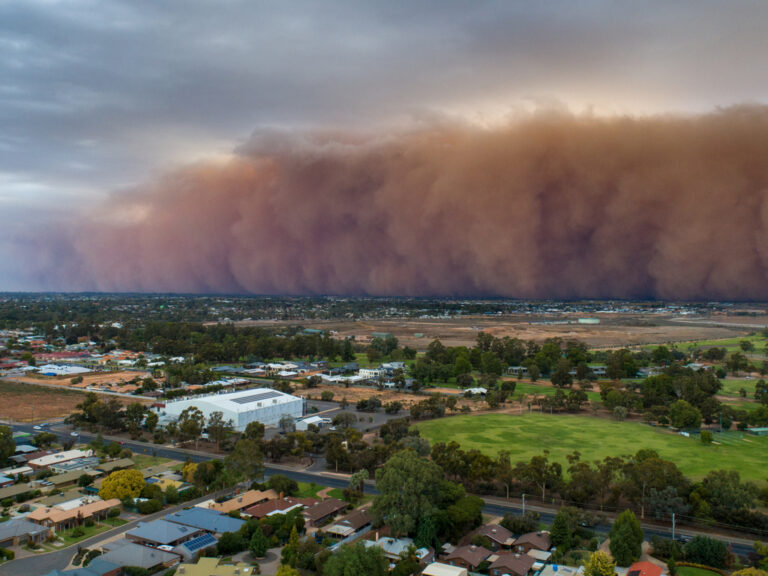
AACI hints at dangerous bushfire seasons in the summers ahead
The Australian Actuaries Climate Index has been updated for Autumn 2023, with the results adding to evidence that conditions for high bushfire risk are building.
The latest Australian Actuaries Climate Index (AACI), which covers the autumn of 2023, shows the beginnings of conditions that could eventually be conducive to strong bushfires. This is driven by high levels of fuel availability after several years of wet weather alongside a turn towards a dryer, hotter El Niño phase and a likely positive Indian Ocean Dipole.
Australia has experienced several years of extreme rainfall driven by consecutive La Niña phases. This resulted in some of the highest vegetation growth across the country since records began in 2000[1], as shown below.
More recently, rainfall in Australia has begun to ease off. This was seen in the latest extreme rainfall index recording a negative value in every part of Australia except for the Central Slopes and Southern and South Western Flatlands regions. This indicates that the frequency of extreme rainfall has been below the average observed during the reference period of 1981-2010. Similarly, the Bureau of Meteorology noted that average rainfall was 10.1% below average for Australia as a whole[2].
This is in part due to a shift in the El Nino Southern Oscillation (ENSO) weather system from a La Niña phase towards an El Niño phase. The Bureau of Meteorology declared an El Niño Alert phase at the end of May. When this has occurred in the past, an El Niño event has developed approximately 70% of the time[3]. El Niño conditions generally result in below-average rainfall over much of Australia, especially the eastern parts of the country, as shown by negative extreme rainfall index values. This is in stark contrast to La Niña, which tends to lead to above-average extreme rainfall values, especially on the east coast.
In addition to El Niño, climate models suggest that a positive Indian Ocean Dipole is likely to develop in late winter or early spring[4]. This tends to suppress rainfall over central and south-east Australia. The drying effect of this weather system is stronger when it appears in conjunction with El Niño.
The large quantities of available fuel that have resulted from several consecutive wet years combined with the drying out brought on by a likely El Niño phase has the potential to create conditions conducive to high bushfire risk in coming years. This may take time to eventuate due to the significant amount of moisture that has accumulated in the soil in recent years.
In line with these observations, the Climate Council has highlighted that fire fuel loads in some inland parts of the country are now several times higher than is typically seen[5]. This has the potential to lead to grass fires in particular.
This type of bushfire burns with less intensity than forest fires but spreads more quickly due to the large quantities of available oxygen, with flame fronts recorded at about 25 km per hour. Despite the lower heat, grass fires can lead to casualties and significant property damage.
As well as showing below reference period average extreme rainfall, the climate index shows above reference period average sea-level and extreme-high temperature components. The sea level index was most elevated in the East Coast South Cluster, which covers Sydney and most of coastal NSW, and observed its third-highest value since records began.
The Index measures the frequency of extreme weather conditions and sea levels across Australia and how these vary over time.
It covers extreme high and low temperatures, extreme rainfall, consecutive dry days, extreme wind and sea level. The Index was launched in November 2018 by the Actuaries Institute and is updated four times a year by Finity Consulting.
Unlike many other measures, the climate index focuses on changes in the extremes. This is a more relevant metric for the insurance industry than averages, as it correlates more closely with damage. This is done by measuring how often we observe exceedance of the 99th percentile of the reference period of 1981-2010. More details and full results can be found on the microsite.
The purpose of the climate index is to provide a publicly available measure of extreme weather and demonstrate how the capabilities of the actuarial profession can contribute to the assessment of climate risk.
Alongside the North American Actuaries Climate Index[6], it is one of two climate indices produced globally on behalf of actuarial associations and has been referenced in the media[7] and in government reports[8].
References
[1] https://www.ausenv.online/aer/vegetation/index.html
[2] http://www.bom.gov.au/clim_data/IDCKGC2AR0/202305.summary.shtml
[3] http://www.bom.gov.au/climate/about/australian-climate-influences.shtml
[4] http://www.bom.gov.au/climate/enso/#tabs=Indian-Ocean
[5] https://www.climatecouncil.org.au/resources/powder-keg-australia-primed-to-burn/
[6] https://actuariesclimateindex.org/home/
[7] https://www.insurancebusinessmag.com/au/news/environmental/climate-index-reaches-record-levels-414880.aspx
[8] https://naturaldisaster.royalcommission.gov.au/publications/exhibit-1-006003-shp5010010001-australian-actuaries-climate-index-some-comments-extremes
CPD: Actuaries Institute Members can claim two CPD points for every hour of reading articles on Actuaries Digital.






